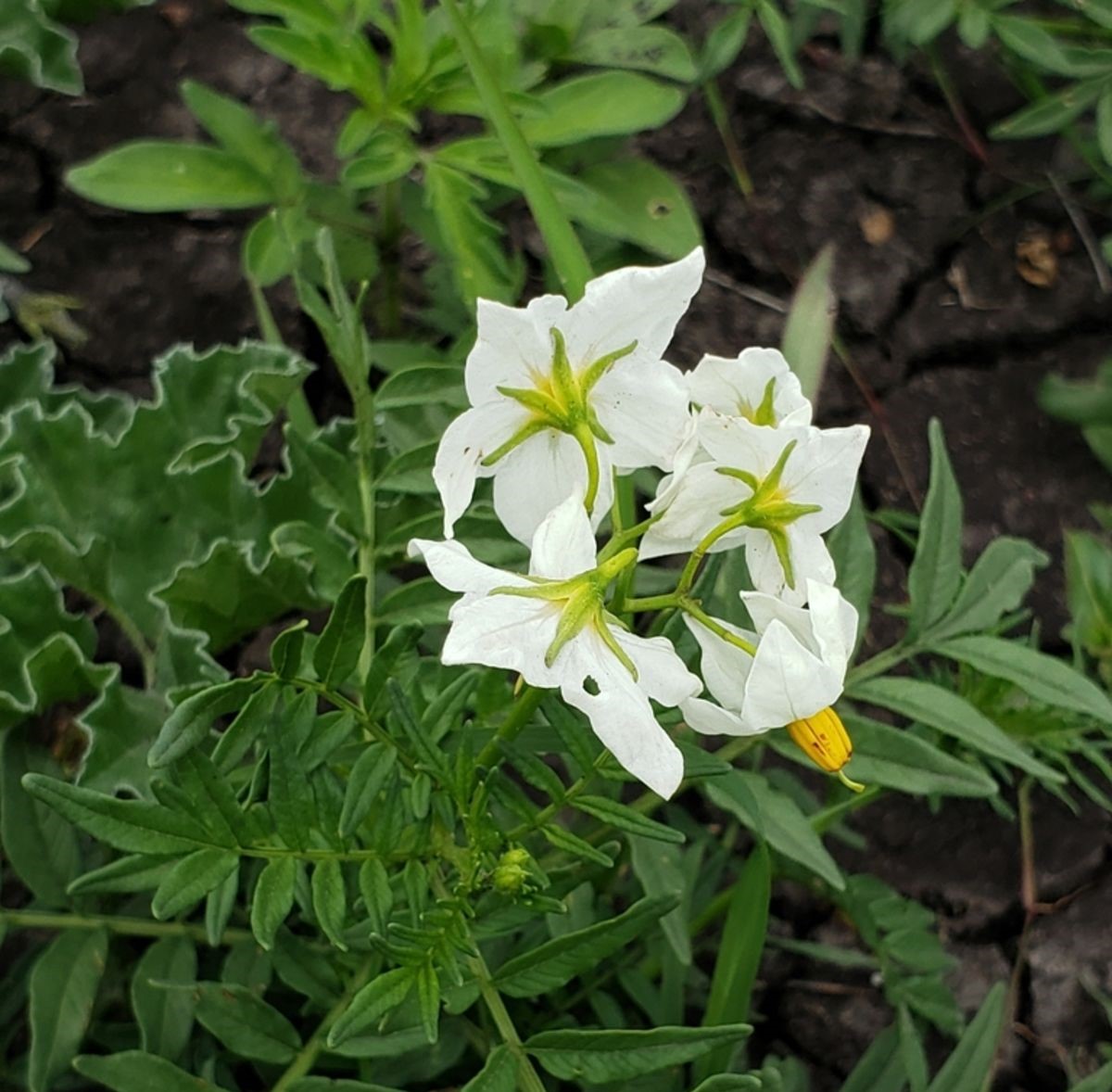Solanum pinnatisectum
Overview
| Genus | Solanum |
| Species | pinnatisectum |
| Common Name | Tansyleaf nightshade |
| Abbreviation | S. pinnatisectum |
| Ploidy | Diploid (2x) |
| Chromosome Number | 2n=2x=24 |
| Genome Size | 630 Mb |
| Genome Assemblies | 4 |
| Cross Reference | NCBI taxon: 50273 |
Organism Image

Description
Solanum pinnatisectum, the tansy-leaf nightshade or tansyleaf nightshade, is a species of flowering plant in the family Solanaceae, native to Arizona in the United States, and to Mexico. A wild potato, it is being extensively studied for its resistance to Phytophthora infestans (the cause of late potato blight), in an effort to improve the domestic potato Solanum tuberosum.
Whole Genomes
Whole Genome Sequences & Annotations for Solanum pinnatisectum
S genes
Solanum pinnatisectum 'LQN (Isolate)' ASM3557808v1 S genes
| Query | Chr | Size(bp) | Coordinates | BLASTn Hit | BLASTn %ID | Domain |
| SLF15 | CM069076.1 | 68,988,332 | 3033868-3032609 | Solanum tuberosum DM8.1, SLF15 | 96.4 | F-box domain |
| SLF15-2Ψ | CM069076.1 | 68,988,332 | 3101363-3100112 | Solanum tuberosum DM8.1, SLF15 | 95.9 | - |
| SLF16Ψ | CM069076.1 | 68,988,332 | 4158467-4157287 | Solanum tuberosum DM8.1, SLF16 | 97.6 | - |
| SLF6Ψ | CM069076.1 | 68,988,332 | 21244843-21245991 | Solanum tuberosum DM8.1, SLF6-2 | 95.1 | - |
| SLF9 | CM069076.1 | 68,988,332 | 24759940-24761025 | Solanum tuberosum DM8.1, SLF9 | 97.4 | F-box domain |
| SLF4Ψ | CM069076.1 | 68,988,332 | 26314375-26313210 | Solanum pimpinellifolium KJ814871.1, SLF4 | 92.8 | - |
| SLF18 | CM069076.1 | 68,988,332 | 40526508-40527620 | Solanum tuberosum DM8.1, SLF18 | 95.4 | F-box domain |
Downloads
The Solanum pinnatisectum S gene sequences are available in FASTA format.
| CDS and Protein (FASTA file) | S-gene_Solanum_pinnatisectum |
Publications
NCBI BioProject PRJNA1030533. Solanum Pinnatisectum Genome sequencing.
Tang D, Jia Y, Zhang J, Li H, Cheng L, Wang P, Bao Z, Liu Z, Feng S, Zhu X, Li D, Zhu G, Wang H, Zhou Y, Zhou Y, Bryan GJ, Buell CR, Zhang C, Huang S. Genome evolution and diversity of wild and cultivated potatoes. Nature. 2022 Jun;606(7914):535-541. doi: 10.1038/s41586-022-04822-x.